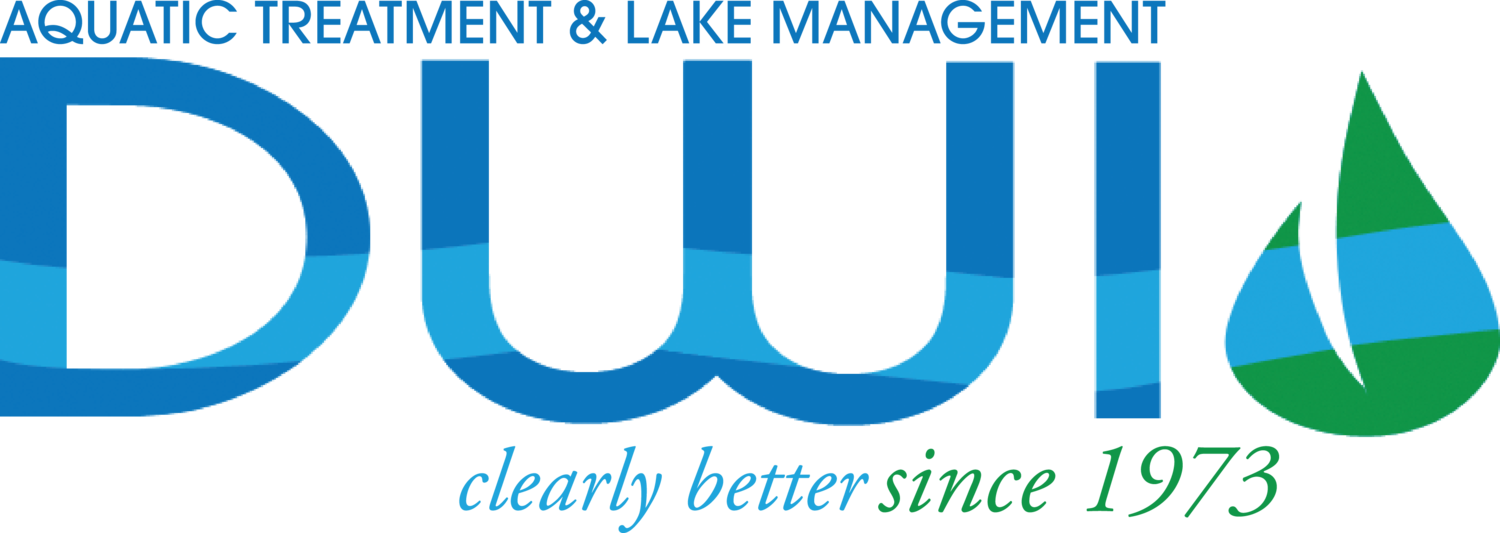By Patrick Simmsgeiger, Founder of DWI
Copper (Cu) products are able to control algae and cyanobacteria in aquatic environments by discouraging their life cycle. To kill 100% of a microorganism is impossible, so we toxify the water with trace elements of Cu until they retract colony growth. Chelated Cu products present an advantage in this control application compared to solid Copper-Sulfates. A further technology plateau exists in a double-chelated Cu molecule.
Many aquatic environments are rich in limestone, chalk or gypsum. Cu molecules attract these minerals like a magnet, but on a chemical level under ambient conditions. The resulting compound is a heavy Cu-Carbonate (Cu2CO3) which will fall or ‘precipitate’ out of the water column. Cu2CO3 molecules have a specific gravity greater than water so they sink into the sediment layer. This bonding diminishes the amount of Cu intended for the target species that live in the water column. Many applicators simply put more product into the water until the intended control is reached. Unchelated Cu can be toxic to many types of aquatic life when higher levels are used to compensate for precipitation. This old-school product also combines with free hydrogen ions in the water to form sulphuric acid (H2SO4), which is highly corrosive to lifeforms and equipment, and smells like rotten eggs. Needless to say, the application of a solid into the water column requires the crystal to dissolve, which may not occur before a portion of the product reaches the bottom. But tradition is difficult to overcome; many applicators like the feel and even the sound of solid Cu as it hits water.
Chelated Cu solutions do not combine as easily with the aqueous minerals present because a portion of the ions are already bonded. These liquid algaecides deliver better value by remaining suspended within the water column longer. A lower weight of Cu is needed for the same outcome compared to over-dosing with the blue crystal form. The fortunate side-effect is less precipitate at the bottom, which will need to be removed when toxicity is too high. Limnology science is discovering that lake bottoms may account for more than the majority of their own annual nutrient loading and toxicity issues. There is also an associated labor savings when using less product and chelated products are safer to handle because of the lower Cu molecular weight.
A double-chelated Cu formulation bonds most of the remaining ions, representing the latest in technology. One might ask, “How is the algae affected if most of the ions are already bonded?” Algae do not swim to or away from sources as they are not technically mobile. Rather than consume the algaecide, the presence of diffusing Cu interrupts the colony life-cycle of microorganisms. There is a lower incidence of Cu exhaustion while realizing the same level of control with chelated products. This allows the delivery of persistent Cu molecular-weight to the water column, from a product that is safer to apply and healthier for the biosphere, with other tertiary advantages.
Because a lower Cu concentration can be used, the result is better in the current season and over the long-term ecologically to the waterscape. Less Cu within the water is less toxic for fish and reduces plating-out and corrosion. This finer focus of Cu lasts longer, allowing for better control toward the 1.0ppm of Cu potable water limit (see EPA - Lead and Copper Rule, 1991). The user has more control and less labor in application and product handling/storage. In real-world experience, chelated Cu is targeted on the problem species at a higher ratio, decreasing the need for more efforts to interrupt the life-cycle of target species, also reducing long-term soil toxicity.
Not all chelator ingredients are the same. The best Cu products maintain potency in high alkalinity waters, even in colder temperatures. A good test is to freeze a gallon of product and then thaw it. If less than 100% returns to solution, then the formulation is inefficient and/or the chelator is not high quality. Microorganisms have different growth characteristics in different water chemistries. Performance should be consistent versus a broad range of species. The best product also has delivers control over a variety of geographic features with unique water chemistries, including ‘hard water’ environments.
Technology presents better tools, and chelated Cu is a prime example. Make sure your facility is using a highly controllable and cost-efficient compound. The availability of a double-chelated product allows ease of application, greater ppm control, and lower water toxicity as first-stage advantages. Overall Cu weight can be reduced, the algae will be kept to a healthy minimum, and long-term sediment cleaning events can be extended up to three times into the future. The results will speak for themselves while the application cost is equivalent to the older Cu products.



